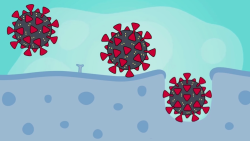Europe is bracing for a long and difficult winter. The continent’s second surge of Covid-19 is well and truly here, and a summer of more relaxed restrictions is now drifting back towards the dark days of lockdown.
Even countries that had been lauded for managing to keep their coronavirus cases and deaths relatively low are witnessing historic spikes, and imposing new restrictions as a result.
According to the European Centre for Disease Prevention and Controls (ECDC), as of Wednesday, none of the 31 EU, EEA and UK countries it reports data on are reporting fewer than 20 cases per 100,000 people over the past 14 days, a threshold many experts recognize as cause for alarm.
The three worst-affected nations are the Czech Republic, which reported 346.1 cases per 100,000, Spain, which has 305 cases per 100,000 and the Netherlands, which recorded 270.2 per 100,000.
As recently as June, the Czech Republic and the Netherlands were regularly reporting fewer than 100 infections a day, compared to thousands of daily cases now.
The Czech Republic is under a state of emergency in which authorities will be able to temporarily implement legislation aimed at squashing the epidemic without the usual level of democratic scrutiny.
And the Netherlands, which had managed to avoid any major national lockdown, has restricted social gatherings outside homes to a maximum of four people and is shutting bars at 10 p.m.
Ireland, another country which had been applauded for getting cases to near zero while infections soared elsewhere, was registering 112.8 cases per 100,000 as of Wednesday. This spike has been sudden, as reported cases have surged from around 100 a day to over 400 in less than a month.
Even Iceland – which appeared over the summer to have almost eliminated the virus – has introduced new measures that will see gyms, pubs, restaurants and nightclubs close. A recent surge has taken Iceland’s cases per 100,000 to 185.4.
How can it be that countries which coped so well with the first phase of Covid are now suffering? “When you put these measures in place, you only suppress the virus, you don’t eradicate it,” said Simon Clarke, associate professor in microbiology at the UK’s University of Reading. “When you start to lift these restrictions, it doesn’t really matter what you’ve done previously. In fact it’s possible that a country’s prior success could lead to compliancy issues the second time round.”
Hans Kluge, the World Health Organization’s Europe director, warned of “fatigue” leading to apathy among Europeans in trying to suppress the virus on Tuesday. “Based on aggregated survey data from countries across the region, we can see, not surprisingly, that fatigue among those surveyed is increasing.”
Gabriel Scally, president of epidemiology and public health at the Royal Society of Medicine, believes that the European countries which initially saw success against the virus did so because “they introduced strict lockdown measures early on.”
However, Scally says that when restrictions were lifted, things like quarantines and contact tracing “were not adequately enforced,” unlike in places such as New Zealand and Taiwan.
The direction of travel across the continent seems depressingly familiar. Infection rates started going up when the most extreme lockdowns ended and have been on an alarming trajectory since the end of summer.
The fact this is happening as Europe approaches winter is of particular concern. “We know that cold weather increases respiratory-tract viruses. Cold weather also pushes people indoors, where there is less ventilation and there is less space for social distancing,” said Clarke. “Put these together and you have more people with respiratory infections meeting in conditions that suit the virus.”
As scientists have learned more about the virus – especially the fact it is transmissible through airborne particles – this fear has been felt acutely. “It will be very difficult to stop the virus spreading if lots of people are gathering indoors, sharing the same air,” said Robert Busch, a senior lecturer in molecular immunology at the University of Roehampton.
Of course, no government wants to lock its people down. The toll on public mental health, economies and societies was enormous in so many nations. However, with no vaccine or therapeutic cure in sight and infections growing exponentially, it’s hard to see what options governments will have if things don’t get better.
“It’s a depressing thought, but it’s fair to say that closing down as many things as possible is the most effective way to suppress the virus,” said Clarke. He adds that he is not optimistic that a vaccine will arrive any time soon. “In a best-case scenario, it is going to take at least two years before we know that we have a fully-effective cure. If you produced the vaccine now and started injecting it into people, you couldn’t be sure that it wouldn’t needing boosting again in a few months.”
Busch says this leaves governments between a rock and a hard place. “Of course, everyone wants to get to a point where transmissions are low enough that our lives are less micromanaged. But the only ways to do that are by voluntarily reducing our own contacts to limit the spread of the virus, or through hard government enforcement measures and very thorough testing, tracing and isolating.”
Some public health experts believe that certain European countries relaxed lockdowns too much over summer and are now suffering consequences not seen elsewhere in the world.
“Had more European countries followed the example of New Zealand or Taiwan, we might not be suffering such long-term misery and the prospect of a winter locked inside,” said Scally. He points out that both placed a strong emphasis on isolating cases and border control. “New Zealand has always had strong biosecurity to prevent imported diseases infecting food stock and many Asian countries learned the lesson of SARS. It was obvious which countries had this under better control very early on.”
To some extent, the argument is academic. The virus is here and “the only way to be sure of suppressing it is reducing social contacts between adults,” according to Clarke. Test, trace and isolate can to some extent help control the spread, but it relies on systems working. And as the UK has shown only this week, things can go badly wrong, as the government was forced to admit that it’s maligned testing program had recently failed to report more than 15,000 positive coronavirus cases.
Which brings us back to the rock and the hard place where governments find themselves: the only way to guarantee reducing infection rates is to lock people down, yet every lockdown carries the risk of public fatigue leading to a lack of compliance.
As Clarke puts it: “Hopefully governments will be able to tone it down so the things we have to do are less onerous and less restrictive, but this isn’t going away. In the short-term the best we can hope for, even with a really good vaccine, is to live with restrictions that are manageable.”
























